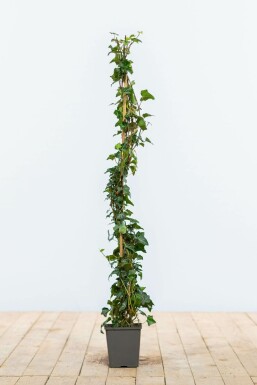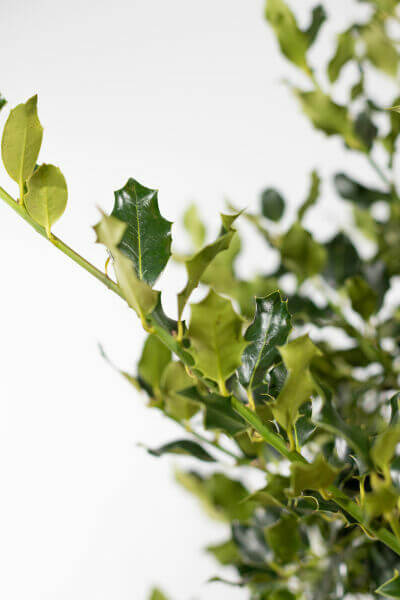Hedging Plants For Tall Screens
Boost your garden's appeal with lush hedge ranges such as Yew (Taxus), Thuja, Laurel, Photinia, and Bamboo, commemorated for their structural integrity and ecological benefits.
Yew and Thuja supply evergreen coverage and winter strength, while Laurel offers fast development and broad, fragrant leaves.
Photinia includes seasonal appeal with its lively red foliage, and Bamboo lends a low-maintenance, peaceful atmosphere.
These hedges improve air quality, minimize sound, and create tranquil, private areas.
Correct planting, spacing, and upkeep make sure vigorous growth and eco-friendly harmony.
Explore how these rich ranges can raise your garden's beauty and well-being.
Secret Takeaways
Change Your Garden With Lush Hedge Varieties
- Select Yew for its dense, evergreen development and unequaled longevity.
- Choose Laurel for its fast development and broad leaves, making sure fast personal privacy.
- Choose Photinia for its vibrant seasonal foliage, which turns a striking dark red.
- Use Bamboo for a low-maintenance, winter-hardy hedge with visual appeal.
- Space plants 2-3 per meter and prune routinely for optimum development and health.
Popular Hedge Plants
When transforming a garden with lush hedge varieties, it's vital to consider popular hedge plants such as Yew, Thuja, Laurel, and Photinia due to their distinct qualities and advantages.
Yew (Taxus) is extremely respected for its longevity and dense, green development, making it a prime option for sustaining landscapes.
Thuja is kept in mind for its evergreen foliage and robust winter season strength.
Photinia includes seasonal vibrancy with red leaves that darken over time, creating dynamic visual appeal.
Laurel provides fast growth and fragrant, broad leaves, perfect for fast personal privacy.
Furthermore, Bamboo is an excellent choice for ambiance, offering a low-maintenance, winter-hardy choice that improves the garden's aesthetic with its stylish, swaying walking canes.
These choices accommodate a variety of horticultural requirements and choices.
Advantages of Garden Hedges
Garden hedges use a wide range of benefits, making them an important addition to any landscape. These natural barriers are cost-efficient to implement and provide considerable wind defense, enhancing air blood circulation and adding to noise decrease. The thick foliage of hedges like Thuja and Beech guarantees privacy by blocking visibility, developing a peaceful and secluded environment.
Hedges also play a vital role in microclimate regulation, offering a steady environment that fosters plant development and reduces temperature level fluctuations. Their complex leaf structures filter pollutants, improving air quality and adding to a healthier garden community.
Additionally, hedges master sound decrease, absorbing and deflecting sound waves to lower ambient sound levels. This double functionality of offering both visual and acoustic privacy improves the general harmony and aesthetic appeal of any garden.
Planting and Upkeep Tips
For a successful hedge, precise preparation of the planting location is crucial. Ensure the soil has appropriate pH and drain to support strong root advancement.
Area the plants appropriately for the selected types. Water the hedge regularly throughout its initial growth phase, adjusting as needed with seasonal modifications.
Execute a systematic insect control and disease avoidance strategy, utilizing chemical or natural treatments when necessary. Routinely check for aphids, termites, and fungal infections.
Apply mulch to retain wetness and suppress weeds. Seasonal pruning promotes dense growth and air flow, vital for plant health.
Following these guidelines will help you cultivate a dynamic, well-maintained hedge that enhances the charm of your garden.
Spacing and Trimming Guidelines
Spacing and Trimming Guidelines
Appropriate spacing and trimming are important for cultivating healthy, visually appealing hedges. Sufficient spacing makes sure each plant gets adequate nutrients, light, and airflow.
Follow these guidelines for optimal hedge upkeep:
- Spacing: Position hedge plants 2-3 plants per meter to motivate robust development.
- Pruning Techniques: Regular pruning is important for preserving preferred hedge height and shape. Trim new growth in summer and cut down older wood throughout winter season.
- Seasonal Care: Change trimming methods and schedules according to seasonal requirements to ensure plant health.
- Hedge Height: Frequently display and cut to preserve the desired hedge height and achieve consistent looks.
Following these steps will ensure your hedge grows, boosting both the appeal and performance of your garden.
Choosing the Right Hedge
Selecting the Right Hedge
Choosing the proper hedge includes assessing factors such as fully grown height, foliage density, and environmental strength. Effective hedge plant selection requires comprehending each types' development characteristics and site-specific flexibility.
For instance, Yew (Taxus) uses outstanding longevity and thick growth, while Thuja is noteworthy for its winter durability. Additionally, thinking about maintenance requirements is vital; fast-growing species like Laurel or Privet need regular cutting, whereas low-maintenance options like Bamboo or Ivy may be preferable for those looking for minimal maintenance.
Environmental aspects such as soil type, light accessibility, and moisture conditions must also direct the choice process. This mindful approach guarantees the chosen hedges will prosper, providing both practical and visual benefits to the garden landscape.
Delivery and Planting Guidance
To ensure your hedge plants prosper, they must be provided by specialized couriers and planted promptly upon arrival.
Follow these necessary steps for effective planting:
- Soil Preparation: Enhance the soil with raw material to enhance drainage and nutrient material.
- Planting Depth: Create a trench two times the width and equal to the depth of the root ball.
- Watering Strategies: Water thoroughly after planting, keeping the soil regularly wet but not saturated.
- Mulching: Apply a layer of mulch to maintain moisture and reduce weeds.
Consumer Support and Service
Provided the crucial role of prompt assistance in horticultural pursuits, our consumer support team is readily available six days a week through telephone, email, and social media to provide skilled advice and quickly resolve any issues. Their dedication to quick reaction times makes sure customer complete satisfaction by fixing inquiries related to plant health, optimal planting techniques, and upkeep schedules.

Schedule
-------------------
Six days a week
Social Media
This extensive support system, reinforced by an excellent 9.3/ 10 consumer score, highlights our commitment to boosting the gardening experience for every client.
Frequently Asked Concerns
How Long Does It Take for Hedge Plants to Establish?
Hedge plants normally need one to three years to end up being totally developed, with the exact period differing by types and growing conditions.
Efficient care throughout this crucial duration is vital for robust development. Consistent watering, vigilant weed control, and suitable fertilizer application are essential in promoting strong root development.
For instance, fast-growing species like Laurel might establish quicker, while slower-growing ranges such as Yew may take longer. Thorough maintenance accelerates the facility process, leading to healthy and dense hedges.
What Are the very best Hedge Plants for Personal Privacy?
The concern of the best hedge plants for privacy involves assessing evergreen and deciduous alternatives.
Evergreen hedges like Thuja, Laurel, and Cypress provide year-round protection, making sure constant personal privacy.
On the other hand, deciduous hedges such as Beech use seasonal personal privacy, shedding leaves in chillier months.
Secret upkeep ideas for personal privacy hedges include regular trimming, fertilizing in spring, and correct spacing-- typically 2 to 3 plants per meter.
Additionally, constant watering and thorough weed elimination are important for promoting healthy, dense growth.
Can Hedge Plants Attract Wildlife to My Garden?
Yes, hedge plants can attract wildlife to your garden by supplying vital advantages like shelter, food, and nesting sites, thereby enhancing regional biodiversity. Yew, holly, and laurel are outstanding for attracting birds, while ivy supports a range of pests.
However, it is essential to keep in mind that there are some disadvantages, such as increased maintenance to handle insects and regular maintenance. Carefully picking and preserving hedge ranges can help balance these advantages and disadvantages, ultimately cultivating a sustainable and dynamic ecosystem in your garden.
Exist Any Flowering Hedge Plants Available?
Yes, there are flowering hedge plants offered that can enhance the charm of your garden.
For instance, Elaeagnus, also referred to as Olive Willow, produces fragrant white flowers in the fall, including a touch of elegance.
Photinia, another popular choice, showcases vibrant red leaves that develop into an abundant green, creating a dynamic visual result throughout the seasons.
To ensure these plants flourish, it's necessary to practice appropriate pruning methods and seasonal upkeep, such as trimming brand-new growth in the summertime and cutting down in the winter.
These steps will assist keep the health and visual appeal of your flowering hedges.
How Do I Prevent Insects in My Hedge Plants?
To avoid bugs in hedge plants, use natural pest control methods and preserve appropriate hedge care. Introduce useful bugs like ladybugs, which victimize damaging bugs, to develop a well balanced ecosystem.
Regularly inspect your hedges for signs of infestation and quickly get rid of any afflicted parts to avoid the spread. Make sure the health of your hedges by using well balanced fertilizers and providing adequate water.
Utilize mulching to retain soil wetness and correct spacing to lower plant tension and promote robust development. These practices jointly assist in lessening insect problems and maintaining a healthy hedge.
Conclusion
In essence, choosing the ideal hedge ranges such as Yew, Thuja, and Laurel can transform any garden into a relaxing haven. These plants provide year-round plant, improve aesthetic appeal, and deal practical advantages like sound decrease and wind security.
Proper planting strategies, precise spacing, consistent watering, and seasonal cutting are essential for ideal growth.
Reputable delivery services and skilled client support guarantee a seamless experience from purchase to planting, making it easier than ever to elevate your outside space.
Garden Browse this site hedges use a wide variety of advantages, making them a valuable addition to any landscape. These natural barriers are cost-effective to execute and supply substantial wind security, enhancing air circulation and contributing to sound reduction. The dense foliage of hedges like Thuja and Beech makes sure privacy by obstructing presence, producing a peaceful and secluded environment.

Pruning Strategies: Regular pruning is important for preserving desired hedge height and shape. Cut new growth in summer season and cut back older wood throughout winter season.